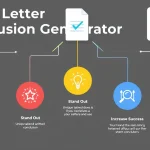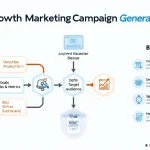Is this tool helpful?
How to Use the Custom AI Product Suggestion Tool Effectively
This tool helps you generate tailored product or service ideas by analyzing your business context, industry trends, target audience, and market environment. To get the most accurate suggestions, fill out each field carefully with relevant details.
-
Business Description: Summarize your business focus, strengths, and current market stance.
- Example 1: “We run an artisan bakery specializing in gluten-free and organic breads. Our strengths include handcrafted recipes and a loyal local customer base in urban neighborhoods.”
- Example 2: “Our company develops mobile apps focused on improving productivity for small businesses. We have strong expertise in user-friendly design and maintain steady growth in the SaaS market.”
-
Industry Trends: Describe current trends, market shifts, or emerging technologies affecting your sector.
- Example 1: “The gluten-free food market is expanding rapidly, driven by consumer health awareness and increased demand for organic and locally sourced ingredients.”
- Example 2: “Mobile productivity apps are increasingly integrating AI-powered personal assistants and cross-platform collaboration features.”
-
Target Audience: Define your ideal customers including demographics, preferences, and behaviors.
- Example 1: “Our main customers are health-conscious adults aged 30-50 who prefer artisanal products and support local businesses.”
- Example 2: “We target small business owners and freelancers aged 25-45 who seek simple yet effective digital tools for managing daily tasks.”
-
Competitor Information (Optional): Share insights about your competitors’ products, market positions, and strategies.
- Example 1: “Our closest competitor offers gluten-free packaged snacks but does not provide freshly baked goods or customizable options.”
- Example 2: “A key competitor provides task management apps but lacks mobile-friendly interfaces and personalized AI features.”
-
Budget Constraints (Optional): Specify any financial limits for product or service development.
- Example 1: “We have set aside $200,000 for developing new gluten-free product lines and local marketing efforts.”
- Example 2: “Our budget for software enhancements is limited to $150,000, focusing on AI integration.”
After completing these fields, click “Generate Product/Service Suggestion.” The AI will analyze your input and provide custom recommendations that match your business strengths and market opportunities.
Introducing the Custom AI Product Suggestion Tool
This AI-powered product suggestion tool helps businesses discover new growth avenues by analyzing your specific business profile, industry trends, and customer base. It generates actionable ideas for products or services that align closely with your core capabilities and market conditions.
Purpose of the Tool
The tool streamlines the process of identifying viable new offerings by using advanced AI analysis. It helps you:
- Spot untapped market opportunities
- Leverage your existing expertise to enter new markets
- Keep your product development aligned with the latest industry trends
- Generate innovative product or service ideas tailored to your customers
- Reduce the risks associated with launching new offerings
Benefits You Gain
- Faster decision-making: Quickly receive recommendations without lengthy market research.
- Customized insight: Get suggestions based on your unique data, not generic templates.
- Comprehensive market overview: Understand where your business fits relative to trends and competitors.
- Innovation support: Unlock creative ideas you might not have considered.
- Strategic fit: Ensure new ideas align with your brand and long-term goals.
Practical Usage of the Product Suggestion Tool
The tool functions via an API form where you submit detailed business and market information. It then processes this data using AI to generate suggestions for new products or services suited to your context.
Use Cases
- Startups or Small Businesses: Quickly identify promising product ideas that fit your niche and budget.
- Established Companies: Explore diversification strategies or innovations to maintain a competitive edge.
- Product Managers and Marketers: Validate concepts or discover features that attract your target audience.
How It Integrates Into Your Workflow
- Gather your business data, industry trends, and target demographics.
- Fill out the tool’s form with comprehensive details to ensure accurate AI analysis.
- Receive tailored suggestions and review their fit with your strategic goals.
- Use ideas as a starting point for product development or market testing.
This tool doesn’t replace expert judgment but enhances your innovation process with data-based recommendations, helping you make better-informed decisions quickly and confidently.
Important Disclaimer
The calculations, results, and content provided by our tools are not guaranteed to be accurate, complete, or reliable. Users are responsible for verifying and interpreting the results. Our content and tools may contain errors, biases, or inconsistencies. Do not enter personal data, sensitive information, or personally identifiable information in our web forms or tools. Such data entry violates our terms of service and may result in unauthorized disclosure to third parties. We reserve the right to save inputs and outputs from our tools for the purposes of error debugging, bias identification, and performance improvement. External companies providing AI models used in our tools may also save and process data in accordance with their own policies. By using our tools, you consent to this data collection and processing. We reserve the right to limit the usage of our tools based on current usability factors.







